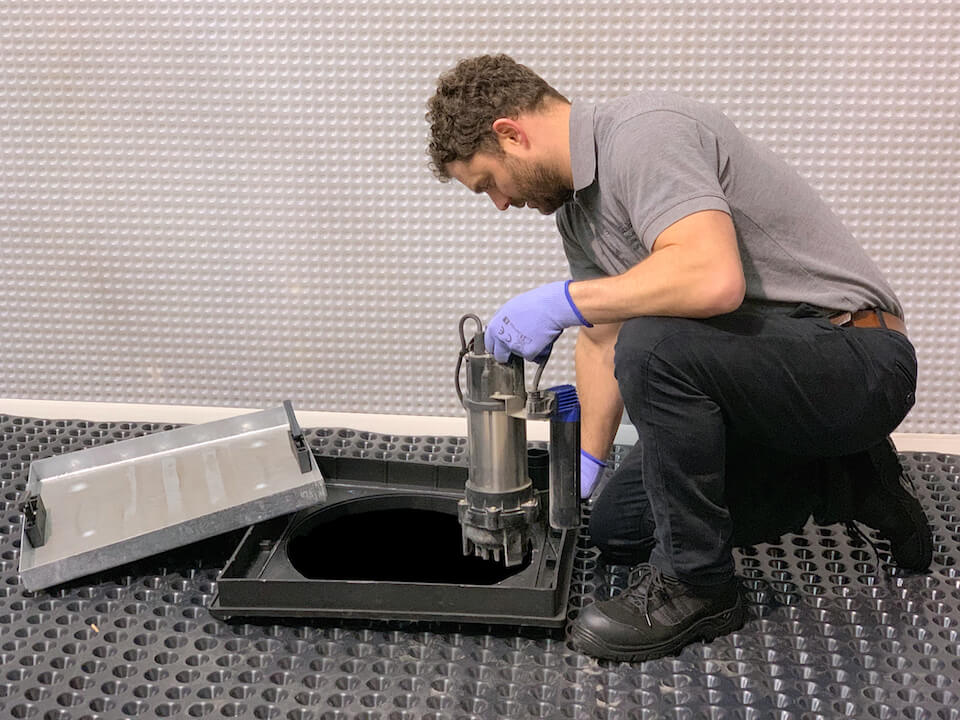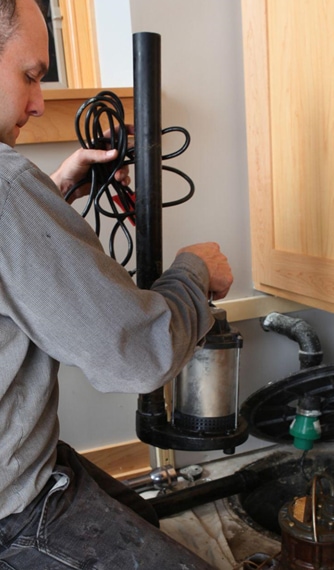My Comprehensive Guide to Taking Care of a Sump Pump
My Comprehensive Guide to Taking Care of a Sump Pump
Blog Article
Just about every person has their unique thoughts on the subject of How to Care for Your Sump Pump.

Sump pumps are vital parts in numerous homes, particularly in locations vulnerable to flooding or excessive moisture. They assist stop water damage by effectively eliminating excess water from cellars or crawl spaces. Nevertheless, like any other device, sump pumps call for regular upkeep to ensure they work effectively when needed the most. Cleansing your sump pump is an important part of its upkeep, and recognizing just how to do it correctly can conserve you from expensive repair services and possible catastrophes.
Intro
Maintaining a tidy sump pump is important for its proper performance and longevity. Disregarding this vital task can bring about blockages, malfunctions, and ultimately, water damage to your residential or commercial property. Consequently, discovering how to clean up a sump pump is crucial for property owners who rely on these gadgets to keep their basements dry and safeguarded.
Indicators of a Dirty Sump Pump
Understanding when your sump pump requires cleansing is essential for protecting against possible breakdowns. Some typical signs that suggest an unclean sump pump include weird sounds throughout operation, lowered water circulation, and visible debris in the pit. If you discover any one of these symptoms, it's essential to clean your sump pump immediately to avoid any type of additional issues.
Getting ready for Cleaning
Before you start cleaning your sump pump, it's important to take some safety and security preventative measures. Start by shutting off the power to the pump to prevent any kind of electric crashes. Furthermore, put on suitable protective gear, such as gloves and safety glasses, to safeguard on your own from dirt, debris, and prospective virus.
Comprehending the Sump Pump
Prior to diving right into the cleaning procedure, it's essential to have a basic understanding of just how a sump pump functions. Typically installed in a pit or basin below the basement floor, a sump pump includes several crucial components, consisting of a pump, a float switch, and a discharge pipeline. When water gathers in the pit, the float button turns on the pump, which after that pumps the water out with the discharge pipeline, far from the building's structure.
Step-by-step Guide to Cleaning a Sump Pump
Shutting down the Power
Begin by disconnecting the power supply to the sump pump to avoid any type of mishaps while cleansing.
Looking For Proper Performance
Prior to re-installing the pump, perform a fast examination to make sure that the float switch triggers the pump appropriately. Pour some water right into the sump pit and observe the pump's procedure. If everything is working properly, you can reconstruct the pump and reconnect the power supply.
Getting Rid Of Particles and Dirt
Make use of a pail or a scoop to get rid of any type of noticeable particles, dust, or sediment from the sump pit. Dispose of the debris appropriately to prevent it from obstructing the pump or the discharge pipeline.
Cleansing the Pump and Float Switch
Once the pit is free from debris, meticulously remove the pump from the pit. Inspect the pump and the float switch for any type of indications of damage or wear. Make use of a soft brush or fabric to clean up the surfaces and eliminate any type of collected gunk.
Purging the System
After cleansing the pump and float switch, purge the sump pit with clean water to remove any continuing to be dust or debris. This will certainly assist ensure that the pump operates efficiently and successfully.
Upkeep Tips to Maintain Your Sump Pump Clean
In addition to periodic cleaning, there are numerous maintenance pointers you can follow to maintain your sump pump in optimum condition:
Verdict
Cleansing your sump pump is an important element of its maintenance and ensures that it runs successfully when you need it one of the most. By complying with the actions detailed in this overview and including normal maintenance into your routine, you can extend the life-span of your sump pump and safeguard your home from water damages.
6 STEPS ON HOW TO CLEAN A SUMP PUMP PROPERLY
UNDERSTANDING SUMP PUMPS
Your sump pump plays a crucial role in protecting your home by managing and removing excess water. It primarily functions as a “shield”, guarding your basement against the damaging effects of water accumulation. The pump is housed in a sump pit in the lowest part of your basement, and its job is to pump out any water that collects there.
During heavy rainfalls or when snow melts rapidly, water can infiltrate your basement, posing potential risks like flooding, structural damage, and harmful mold growth. Here, the sump pump springs into action, pumping out the intruding water and directing it away from your home.
SAFETY FIRST
Before cleaning, remember to prioritize safety. Disconnect the sump pump from the power source to prevent any accidental electric shocks. Also, wear sturdy gloves to protect your hands from any sharp or dirty components within the pump.
REMOVE THE SUMP PUMP
After ensuring your safety, the next step is to remove the sump pump from its pit. Doing this might require careful maneuvering as you don’t want to damage any pump components. Once removed, clean the sump pit to remove any accumulated debris or sludge.
INSPECT THE PUMP
Inspect the pump for any visible signs of wear or damage. Check the power cord, float switch, and impeller housing. If any components look worn out or damaged, consider replacing them to ensure optimal performance.
CLEAN THE PUMP
Thoroughly clean the pump with warm, soapy water. Make sure to rid it of any dirt, gravel, or other debris that might impede its performance. You can use a toothbrush to clean the small, hard-to-reach parts of the pump.
REINSTALL THE SUMP PUMP
Reinstall the pump into the sump pit Make sure it’s positioned correctly to remove the water effectively Once it’s back in place, reconnect it to the power source TEST THE PUMP
Finally, pour some water into the pit to ensure the pump works correctly. It should start automatically and begin pumping out the water; if it doesn’t, check the power source and the positioning of the pump.
Remember, while cleaning your sump pump is an essential part of home maintenance, hiring a professional plumber for a thorough inspection and cleaning at least once a year is also important. This will ensure that your pump is in optimal condition, ready to protect your home from potential water damage.
BEST PRACTICES FOR CLEANING SUMP PUMP DISCHARGE PIPES
Regular Inspection: Regularly inspect your discharge pipes, especially during heavy rainfall or snowmelt periods. Look for any signs of blockage or damage. Early detection of problems can prevent serious issues down the line. Periodic Cleaning: Over time, sediment and debris can accumulate in the discharge pipes, impeding the flow of water. Regular cleaning helps keep the pipes clear and functioning efficiently. You can use a high-pressure water jet to effectively clean the pipes. Insulation During Winter: In colder climates, discharge pipes can freeze, blocking the outflow of water. Protect your discharge pipes from freezing temperatures by insulating them with foam pipe insulation. This will ensure the sump pump can continue to discharge water even in freezing conditions. Proper Positioning: The discharge pipe should be positioned to direct water away from your home’s foundation. Improper positioning can lead to water seeping back into the basement. Ensure the pipe is long enough and angled correctly. Installation of a Check Valve: A check valve prevents water from flowing back into your sump pit after the pump has pushed it out. Installing a check valve helps maintain the efficiency of your sump pump and reduces the risk of flooding. Minimize Pipe Turns: Every curve or turn in the discharge pipe can decrease the efficiency of water flow. By minimizing turns and bends in your discharge pipe, you can increase the efficiency of your sump pump. https://www.fullspeedplumbing.com/how-to-clean-a-sump-pump-properly9999/

I recently found that piece of writing on How to Care for Your Sump Pump when exploring the search engines. Those who liked our page kindly be sure to pass it around. We thank you for your readership.
Book An Estimate Now Report this page